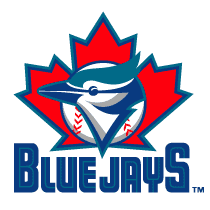Quiz Answer Key and Fun Facts
1. In 2003, the number 7 belonged to pitcher Josh Towers, but who was the first person to wear this number on his Blue Jay uniform?
2. Catcher, Tom Wilson wore number 9 in 2003, but can you tell me who was the first Blue Jay catcher to wear this number?
3. Number 10, Vernon Wells, made an appearance in centerfield in the 2003 All Star Game, contributing a double and a RBI to the American League victory. Can you say which, of the following players, did NOT wear #10 during the Blue Jays' first two seasons?
4. After earning the 2002 American League Rookie of the Year award, number 11, third baseman Eric Hinske, slumped a bit in his sophomore season due to injuries. Do you know which Blue Jay short stop wore #11 in 1978 and '79?
5. Pitcher Cliff Politte, number 19, spent nearly a month on the disabled list (DL) in 2003, but which player wore #19 in 1977?
6. Number 21, pitcher Cory Lidle, spent part of August 2003 on the DL with a groin strain. Twenty-five years earlier, in 1978, that number belonged to a veteran designated hitter (DH) whose nickname was 'The Beeg Mon'. Can you name him?
7. Outfielder Bobby Kielty took over #24 from Shannon Stewart when Minnesota and Toronto swapped them for each other at the 2003 All Star break. In 1978-79 that number belonged to a left-handed pitcher who had a combined 15-30 record in his two seasons with the Blue Jays. Who was that southpaw?
8. In 2003, number 25 was worn by All Star first baseman Carlos Delgado, who had his fans talking about the possibility of a triple crown early on in the season. The first Blue Jay to wear this number was also a first baseman, but do you know which one?
9. During the 2003 season the number 27 belonged to outfielder Frank Catalanotto. In 1979 this number was worn by a first baseman/DH with a somewhat unusual place of birth. Can you choose the correct player and birthplace?
10. No quiz about the 2003 Blue Jays would be complete without mentioning number 32, Cy Young Award winner Roy Halladay. Over the years, several other right-handers have worn 32 on their uniforms, but can you choose which one of the following did NOT?
Source: Author
spanishliz
This quiz was reviewed by FunTrivia editor
Nightmare before going online.
Any errors found in FunTrivia content are routinely corrected through our feedback system.
